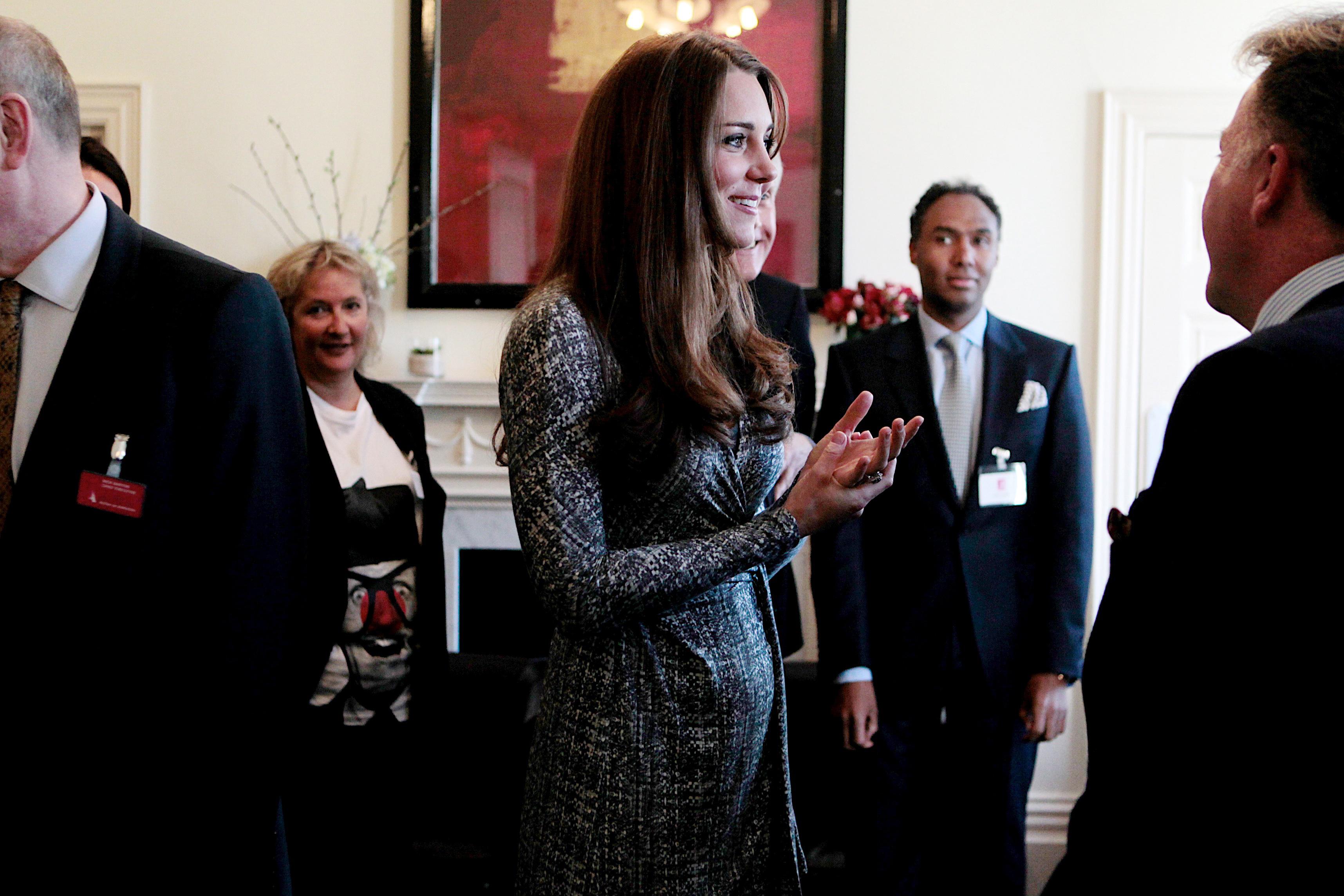As 2013 comes to a close, DoubleX is looking back on the year that was—the stories we covered and missed that captivated, puzzled, enraged, and delighted us. Review with us.
Technically, the royal baby drum began faintly rolling in the fall of 2012. Tabloids declared Kate had a baby bump (though perhaps it was photoshopped?) and that she was pregnant with twins. The official announcement came in December. Severe morning sickness forced the Duchess of Cambridge to check into a London hospital, at which point she and Prince William decided to go public with their news: One heirling on its way. Watch this space.
The first heir to the throne to be born in 31 years! The country—and the world—did more than watch; we all collectively lost our shite. For the next seven months, the press went into overdrive, scrutinizing everything from Kate’s maternity wardrobe to her weight to her coffee-drinking habits. (Decaf, natch.) Due dates were floated, and rejected, and floated again. As the real day, July 22, 2013, inched nearer, we devoured the lists of beautiful, old-fashioned male and female names—George, James, Arthur, Alexandra, Charlotte, Elizabeth—and the articles about whether Kate should be wearing high heels/hiring a nanny/accepting pregnancy tips from Snooki. And then we read the Onion parodies of the articles we’d just read.
Meanwhile, Parliament changed the rules of succession to make sure a female baby could still inherit the throne from her father. Bookmakers pulled in hundreds of thousands of dollars in bets on the kid’s future career. (Um, monarch?) Collectibles sprang up like mushrooms. The frenzy was estimated to generate up to $400 million for the British economy (though our own Matt Yglesias remained skeptical) and coverage in the English press was so ubiquitous that the Guardian allowed readers the option to hide royal baby news on its website. (To everyone’s delight, a BBC reporter would occasionally express his weariness at the baby beat on camera.) Outside the United Kingdom, former Australian Prime Minister Julia Gillard was photographed knitting the infant-to-be a kangaroo; Canadians held baby showers; and Barneys in New York City started selling “royal baby” blankets, baskets, and babygros. No tie-in was too tenuous, no angle too oblique. “Good Morning America recently gave ‘royal makeovers’ to three women due to give birth at the same time as Kate, while the U.S. show Today invited an animal behavior expert onto live TV to give Kate tips on how to introduce her newborn to Lupo, her dog,” reported the Telegraph in June.
In Slate, Hanna Rosin laid out the five worst things about being a royal heir; Simon Akam reassured us that it’s OK to be a Jeffersonian patriot who obsesses over crowned heads (in the same way it is OK—progressive, even!—to be a Jew who celebrates Christmas); and Jess Grose read the gilded tea leaves to predict what Kate had coming as a new mom. Novelist Hilary Mantel infuriated everyone when she argued in the London Review of Books that all our attention had transformed the Duchess of Cambridge into “a jointed doll on which certain rags are hung … a mother-to-be … her only point and purpose being to give birth.”
And then, finally, his Royal Highness Prince George Alexander Louis of Cambridge was born at 4:24 pm on July 22, 2013. He was 8 pounds, 6 ounces. He was healthy. And of course, we promptly forgot all about him. You see, people don’t actually care about babies; they care about princesses’ pregnant bodies and judging the ways different couples prepare for parenthood. The kid is just an accessory until it’s time to freak out because he wore a Nazi costume to a Halloween party. Welcome to the world, George!
